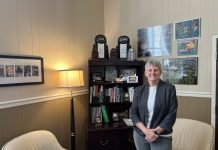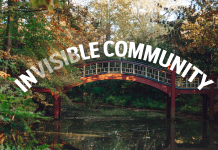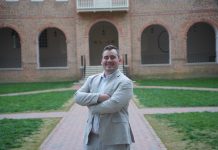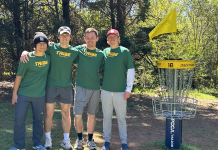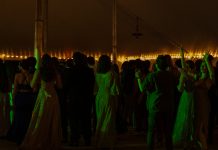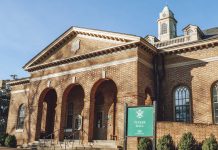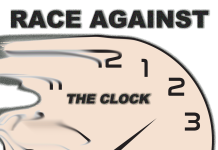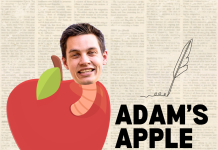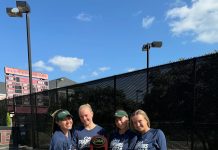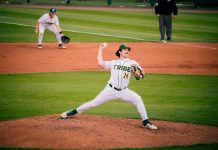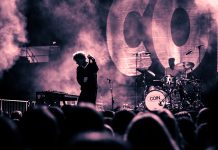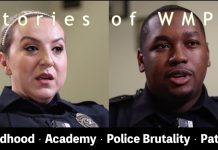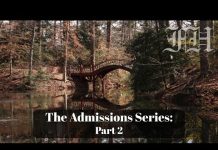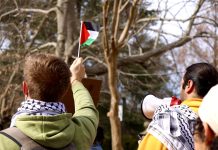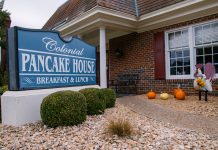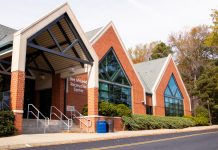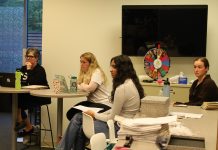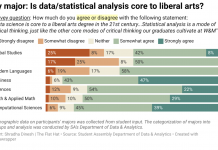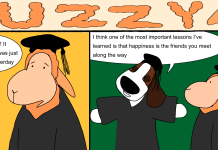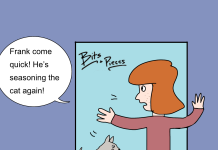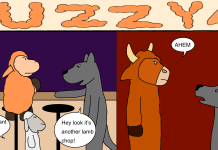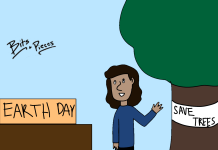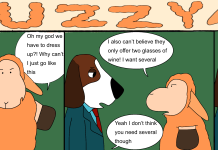Since its inception in the 1920s, Colonial Williamsburg has welcomed visitors to its unique 18th-century setting. Often greeted by a “Good Day” from colonial interpreters, they walk in and out of the Governor’s Palace, take part in gatherings of George Washington and his troops, and witness the attempted tar-and-feathering of a known Torie. Yet while they meander through the picturesque streets of the Historic Area, little do they realize that eager College of William and Mary students are among those employed by the Foundation.
“William and Mary students are as much a part of the Williamsburg community as every costumed interpreter in the Historic Area,” Lauren Menzer ’12 said. “This is our home too, if even for four years. By crossing the street and getting involved with Colonial Williamsburg we immerse ourselves not only in the history in the city we live in and the education of hundreds and thousands of guests, but we’re also being active community members.”
During her summers, Menzer works as an intern for the Colonial Williamsburg Teacher Institute, an annual program that brings together 700 history teachers from around the country to learn valuable techniques in teaching colonial American history. Her favorite moments of this “history boot-camp” includes meeting the actors of the founding fathers, among them Bill Barker, who portrays her favorite founding father, Thomas Jefferson.
She also recalls the more emotional moments she spent with the Institute’s participants.
“On numerous occasions this summer, I saw teachers break down in tears over the powerful scenes from Revolutionary City they were viewing,” she said. “I heard many teachers make great revelations about how they could bring back what they experienced to their classrooms — how they could effectively teach their students about the slave trade, mercantilism, and the trials that sparked the American War for Independence. Having the opportunity to … work with so many wonderful teachers who can impart to their students the importance of colonial America on the shaping of the nation we inhabit today [is thrilling].”
Yet Menzer is only one of the many students who partake in similar Colonial Williamsburg adventures. Through the College’s National Institute of American History and Democracy seven-course certificate program, students are given the opportunity to intern in the department of their choosing. As many as ten students each semester dedicate twelve hours per week to such projects.
According to Dr. Carolyn Whittenburg, director of NIAHD, an internship is an integral part to the students’ understanding of museums.
“One of the key objectives of NIAHD is to offer students an introduction to and experience with museums and public history,” she said. “We wanted to give students the opportunity to actually participate with hands-on experiences at a museum to learn more how a museum operates. We felt that an internship was essential to this goal.”
Susan Kern, Visiting Assistant Professor of History and director of NIAHD internships, agreed.
“I challenge the students to analyze how their internship experience enabled them [to] learn differently or think differently about museums as stewards of history,” she explained.
Fortunately, Colonial Williamsburg is the perfect outlet to do just that.
“Colonial Williamsburg, in particular, affords methods and opportunities for research that are almost impossible most places,” Kern said. “It’s more than just keeping alive disappearing skills — the museum provides avenues to recover past knowledge and use it to understand the lives of enslaved cooks, blacksmiths or tobacco farmers. At its best, Colonial Williamsburg combines rigorous documentary research with specialized understanding that comes from living history interpreters.”
With this understanding at hand, Kern has overseen numerous internships spanning film production for Colonial Williamsburg’s Electronic Fieldtrips to costumed interpretation in the Historic Area. This semester, she continues to work with students whose interests have led them to interpretation in historic trades shops and curatorial work for the Abby Aldrich Rockefeller Folk Art Museum.
Emily Sample ’11, is one of these lucky individuals. Working as a costumed interpreter in the Historic Area’s Apothecary Shop, Sample, president of the Phi Alpha Theta history honors society, studies the terminology of colonial medicine and often presents her knowledge in her encounters with visiting tourists.
“I have to say the best part so far has been meeting all the people who come into my shop,” she said. “I love being in colonial costume and having visitors look at me with big eyes and high expectations.”
Indeed, after welcoming visitors with the initial phrase, “Are you here to see the doctor?” Sample soon explains the uses of chocolate in soothing sore throats and Peruvian bark or quinine to aid in curing “intermittent fever.” Demonstrations may include how to pull out a molar or applying face bandages to gunpowder burns. When not interacting with the public, she has made cough syrup with turnips and sewn bandage linens, all while attempting to remain comfortable in period clothing.
“I’m still trying to figure out how to wear all the clothes, but I’m working on it.” she quipped.
For Lauren Monarck ’13, an intern at the Margeret Hunter Millinery Shop, the costume is the best part of the experience.
“My favorite part has been getting to dress up in costume,” Monarck said. “It’s so different from our clothing but so much fun.”
Morgan Flaherty ’12, too, felt the same way during her internship with Foodways, a department focused on preparing period foods in the Governor’s Palace kitchen. Wearing her favorite item — a cloak — she was able to realize what it was like to be on display for the tourists’ attraction.
“It was weird the first few times I walked into Colonial Williamsburg in costume because people automatically assumed I was an expert in everything Colonial Williamsburg and would ask where specific buildings were,” she said. “It was also very different being sort of on display — people would take pictures with me or just run in front of me and take pictures as I walked. When they did that I wasn’t sure if I should smile for the camera or just look natural.”
Yet these awkward moments never downgraded her overall experience. By the end of her internship, she not only felt comfortable answering questions from visitors but could “cook with coals, use a brick oven, and use a twig whisk.”
And as Menzer remarks, these experiences like Flaherty’s are why students continue to work for the institution:
“There’s something magical about Colonial Williamsburg,” she said. “[It] is the only place in the world that would offer me opportunity to work with such a diverse and talented group of people while being so utterly immersed in the history that I love.”


